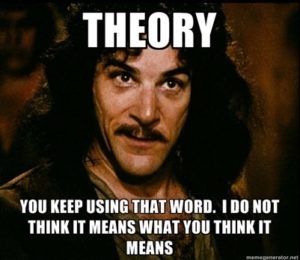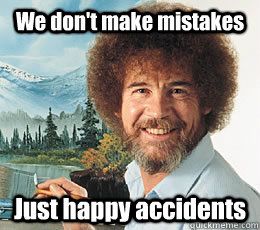What amazes me is to see how the lines of lives come together — lead to a single time or a place. I am a big picture person, and I like to contemplate it. When I think about what inspires my work every day at GCC, I think of my grandma, Helen Kobylski. My sisters, cousins and I called her Bisia (pronounced Bee-sha). Bisia was the daughter of Polish immigrants, and she grew up in a Polish neighborhood on Detroit’s west side. When she was in sixth grade, her father died of cancer, and she dropped out of school to work to help support the family. She never went back to school.
Bisia was an avid reader, but she didn’t write much. The only evidence I ever had that she wrote was when she signed birthday cards, “Love, Bisia.” That was it. But she loved Westerns. She loved baseball. She loved a good political discussion. She loved bingo. She was so passionate about what she loved. She was also so limited by her lack of education, not at all in terms of her intelligence, but in terms of her ability to secure good work. Bisia never had a job that wasn’t in retail. She never had a job that earned much over minimum wage. She worked hard for decades, and when she retired, she was on a fixed income. Every single year for Christmas, my two cousins, two sisters, and I received the same gift from Bisia: a single, crisp, two dollar bill.
Bisia was not the kind of grandmother to spoil her grandkids. She’d be more likely to yell at you to finish your homework or be too busy washing my cousins’ mouths out with bricks of Dial soap than she would be to give you a hug and a kiss. But when I went away to graduate school — all the way from Detroit to Cleveland — and came home on my breaks, Bisia would have a whole collection of food waiting for me. She would give me her bucket-sized government peanut butter, the government block of cheese, her ration of canned ham, and the gigantic rectangles of butter, all generic, all utterly delicious. I’d drive these back to Cleveland with me and share them with my fellow graduate students who didn’t live close enough to home to receive such a bounty.
Despite her own lack of education (and likely because of it), Bisia made sure that my mother was the first in the family to graduate from high school. Somehow, she sent my mother to Mercy College. Somehow, back when women didn’t really go beyond their bachelor degrees (if they went to college at all), my mom went to the University of Michigan for a Master’s Degree in Social Work. She did this before she met my dad and before my sisters and I were born. Somehow, my mother earned a graduate degree in the early 1960s.
Bisia’s story, and thus our family story, reminds me greatly of our students’ stories. So many GCC students come from somewhere else, speak another language, are first generation college students, are negotiating two languages (or more) and cultures daily — the one in public, and the one at home. I look out over my classroom, I listen to my students speak, I read their writing and learn their stories, and, when I do, my grandmother is always nearby. I see my GCC students, and I am reminded of where I am from. Every single day. I think of the tradition that existed only between my grandmother and me, of Bisia saving her allotment of government-assisted groceries, and it inspires me daily to help others achieve their higher education.
Bisia was the first person in her family of origin to live past age 49. Then she made all the way to her 80s. I was 34 when she died. There isn’t a single day when I’m in the classroom that I don’t think of my grandmother. She had a tough life, and she was fierce because she had to be; her energy went into investing in the future despite having very little resources. The lines of her life eventually helped draw the lines of mine. And now I just keep drawing them and extending them. In addition, I am blessed to be in the position of offering the opportunity for my students to draw their own lines to see where they might lead. When it happens this way, and all the lines come together –if even only for a semester or two — there really is no beginning, and there really is no end. It is the most motivating big picture for me ever, and it’s precisely what keeps me going.






